History
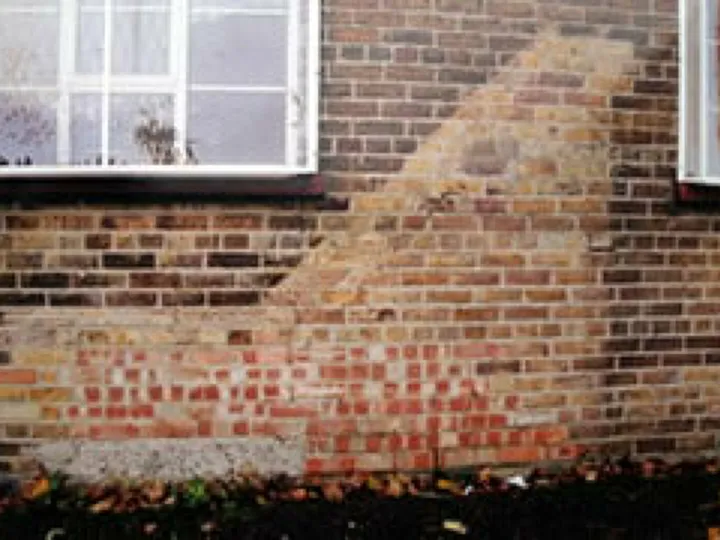 Boiler room lintel
Boiler room lintel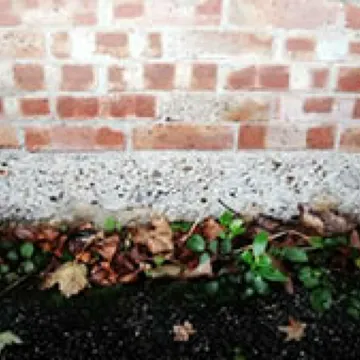 Boys Brigade shield
Boys Brigade shield Plaque in memory of Lillian Spiers
Plaque in memory of Lillian Spiers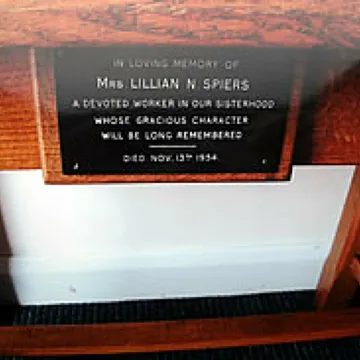 Plaque in memory of Lillian Spiers
Plaque in memory of Lillian Spiers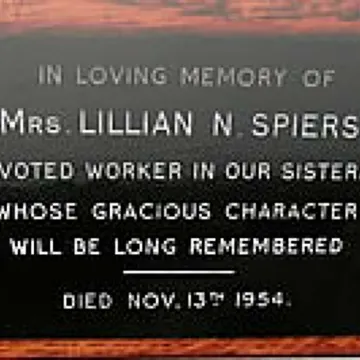 Plate in memory of Annie Mary Jones
Plate in memory of Annie Mary Jones Inscription remembering Annie Mary Jones
Inscription remembering Annie Mary Jones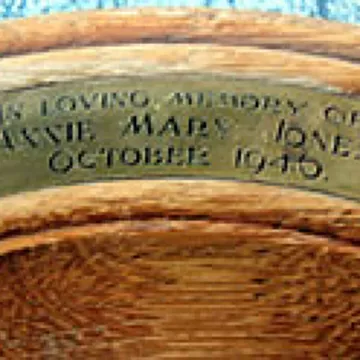 Boys Brigade – 50th Anniversary
Boys Brigade – 50th Anniversary Long service certificate for Jack Yarrow
Long service certificate for Jack Yarrow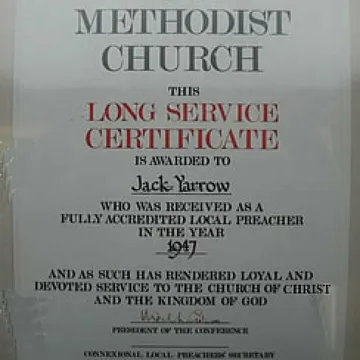 Ground breaking spade
Ground breaking spade Inscription on the spade
Inscription on the spade
The Beginnings
The Enabling Act for Methodist Union was signed in the Royal Albert Hall on 20th September 1932 and Wesleyan, Primitive and United Methodists became legally one Methodist body.
In the years immediately preceding this, negotiations took place in Slough between Herschel Street Wesleyan Methodists and William Street Primitive Methodists about implementing the proposed Union locally. Out of this arose a suggestion for a Church in the Farnham Road area of Slough. A joint committee, set up in January 1930 to investigate potential sites, found two -- one on the Baylis Court Estate and the other in Hampshire Avenue. Although the committee decided in April 1931 that the former was the better one, after prolonged negotiations, it was the Hampshire Avenue site which was eventually purchased -- on 4th March 1935 for £640.
Around this time there was an influx of people from the North, the Midlands and Wales who came looking for work on the Trading Estate. A Methodist Gathering started, meeting initially in a home. When that became too small, and there was still no Church, they moved to a building in Warrington Avenue (now Godolphin Infant School; later, many children in the Sunday School attended there) and held their first evening service there on 18th November 1934. The driving force behind this was the Superintendent Minister, Rev Thomas Caddy, assisted by a team of Richmond Students. This gathering became known as the Trading Estate Methodist Church, Slough. The Sisterhood continued to meet in a local house.
Messrs A Brockenhurst of Manchester, the designers of Slough Central Hall, were appointed as the architects. The plans were drawn up and costed at £4,000. Although a grant was given by the Methodist Church, a considerable amount of fundraising was also needed. The contract was awarded to H D Bowyer, work started immediately, and the stone-laying service took place on 2nd May 1936.
The building was erected in five months, and the renamed Hampshire Avenue Methodist Church was opened by the President of the Methodist Conference on 26th September 1936.Boiler Room Lintel The original building had a boiler house under the kitchen. Evidence of where the steps went down, is still visible on the back wall of the kitchen, and a lintel, which would have been over the door of the boiler room, is at ground level. One of the members, Lewin Bowyer, used to go down every Saturday night, whatever the weather, to stoke the boiler ready for Sunday.
Too small, then too large!
Almost immediately it became apparent that the premises were too small for the large congregation and Sunday School.
The Trustees agreed to an extension with a large Hall and two classrooms. This was built and completed in September 1939 within days of the outbreak of the Second World War. The Hall was furnished as a theatre, and in the years after the war, was used by a local amateur dramatic group who put on "some very good" musicals.
After the war, during the late 1940s and the 1950s, the Church flourished and there were many activities.
There was a large choir, with choirmaster and organist. Longstanding members of the Church remember the Boys' Brigade band parading through the local streets one Sunday each month before the Morning service. There was, of course, an evening service as well in those days. There was a busy Sunday School, and a Girls' Life Brigade Company.
Women didn't go out to work then, and the Sisterhood thrived. Once a year, the Sisterhood held a Christmas Bazaar on a Wednesday afternoon. Typically, their hard work raised between £600 and £700, which was divided between their favourite charities.
Items currently in the Church, made by Church members, inmemory of former Sisterhood members.
When Ossie Dendie and his family moved from Stoke on Trent and joined the Church, Ossie started a branch of the Regnal League -- an organisation which has its origins during the First World War. In February 1918 Rev Donald Steadfast, a Chaplain to the Forces, was stationed at Bethune in France, where there was a Soldiers Club for troops withdrawn from the trenches for a short rest. There he developed an idea for a movement inviting men to explore "wholeness of life". By the time hostilities ended in November 1918, some 74 branches of the League of Fellowship had been established on the Western Front. The work continued in Britain after the war, with the formation of the Regnal League in March 1919. Soon afterwards a Women's Branch was also established.
The Hampshire Avenue branch won the South of England boule championship many times and the cup was nearly always at the Church!
A new organ was purchased and dedicated in October 1959.
However, by the late 1960s the congregation had dwindled. As the older people died or moved away, and no new leaders came forward, the youth organisations shrank or were disbanded. The buildings were prone to vandalism and the financial burden became too great for the reduced membership.
On more than one occasion the Church faced closure due to membership and funds both being low. Once, the point was reached where even the final service had been planned and the preacher appointed ... but members stepped in and the Church was saved at the last minute.
Nevertheless, in 1970 the Trustees considered various possibilities, including merging with another Methodist Church or with the local Anglicans, and then selling the premises. Reluctantly, with the Hall needing lots of work and the funds not available, the decision was taken in 1972 to demolish the Hall and classrooms, and sell that part of the site (about a quarter of an acre) to the Ealing Family Housing Association for £23,000. Later this became a small block of flats in Rutland Avenue.
Boys Brigade – 50th Anniversary
The Boys' Brigade held a large reunion in the 1980s attended by many of the young men who had grown up locally.
Long service certificate for Jack Yarrow
There were reminiscences about a Local Preacher, Jack Yarrow, "a lovely man" who was keen to encourage the young people to come to church. After the Youth Club closed, Jack used to collect the teenagers in his minibus and take them to his home where they played games and enjoyed cakes made by his wife, Mavis, a wonderful cook (custard slices being one of her specialities)!
New Growth, enhanced premises
In the early years of the 21st century, Hampshire Avenue produced an ambitious development scheme with a vision which was more than just a building project. It was about God, the church and the community, and rediscovering "our calling and our mission". The Circuit Meeting on 30th November 2004 approved the project, costed at £100,000, and including:
- Expanding the worship area.
- Additional facilities for educational purposes; joint LEP events; use by and for the community.
- Replacing the antiquated heating system.
- Facilities for the disabled and for mothers with young children.
The building work was carried out in 2009 – 2010, though the final cost was over £216,000.
The heating system in the new Hall is still underfloor, but it is now fuelled by gas and not solid fuel!
Since the work was completed, the Church premises are being used extensively. The Church members are actively involved in their Local Ecumenical Partnership (LEP) and the community. The new Hall is used as classrooms for adult learning courses run by the Workers' Educational Association (WEA), by prayer groups and by other Christian groups.
A recent major event was the Flower Festival held in May 2012. Disappointingly, it only raised £700 ... the same sum as raised by a Sisterhood Christmas Bazaar all those years ago ...
Over the years, the congregation at Hampshire Avenue has reflected the changing ethnic mix in this part of the world. When it started in the 1930s, the Church was known as "the Welsh Church", reflecting the many Welsh people then seeking work in Slough. By the mid-2010s, roughly half the members are Caribbean, half African, with the English very much in the minority. But on feast days and special occasions, what a wonderful variety of food to enjoy!
With their new building and their links within the LEP, the members are all looking forward to the challenges ahead. Working in partnership with the other two Methodist Churches in Slough, Hampshire Avenue is participating in a joint initiative to show that Methodism is indeed "Alive in Slough".
Acknowledgements
I am indebted to Brenda Cheeseman for her invaluable help.

